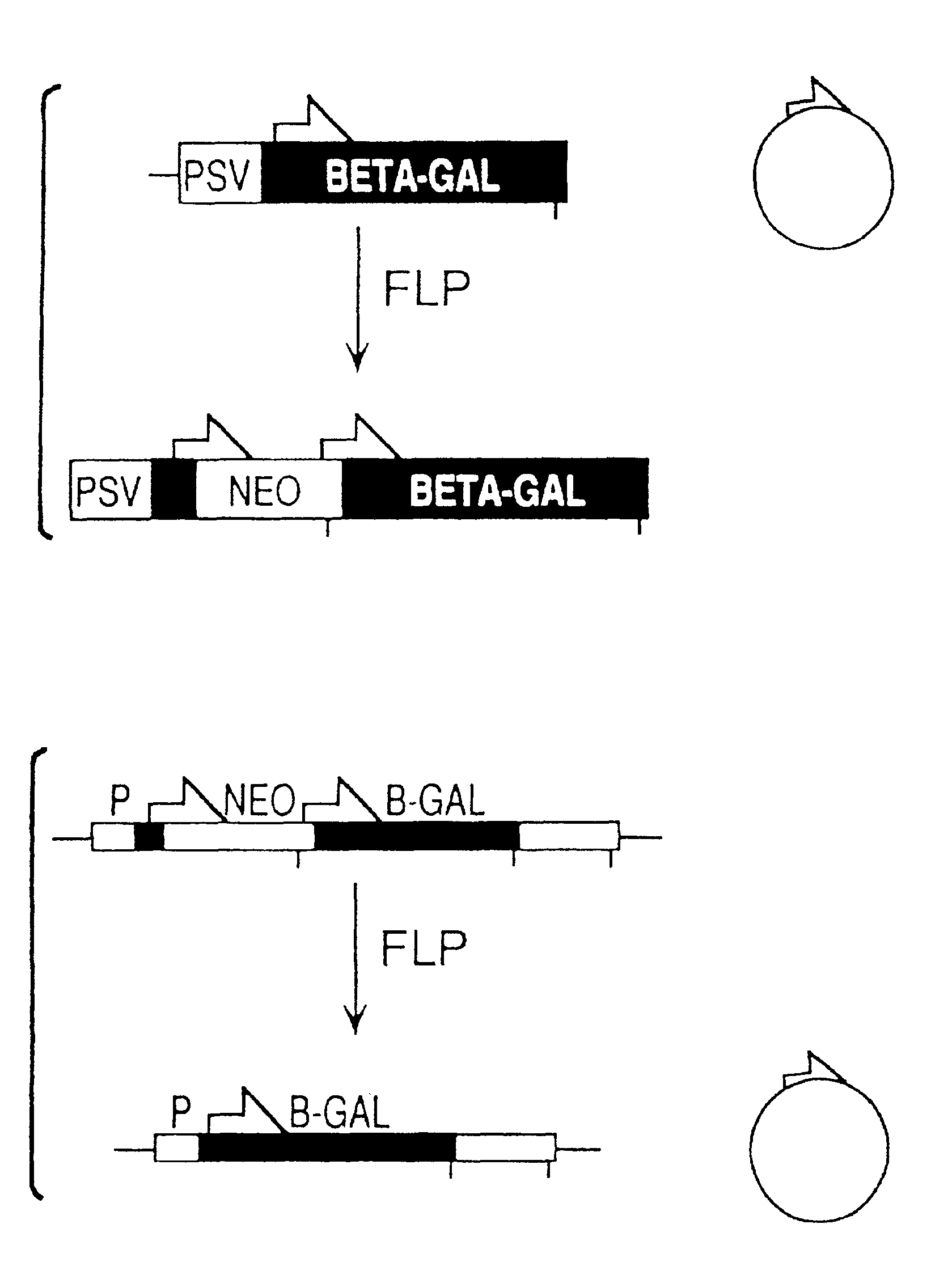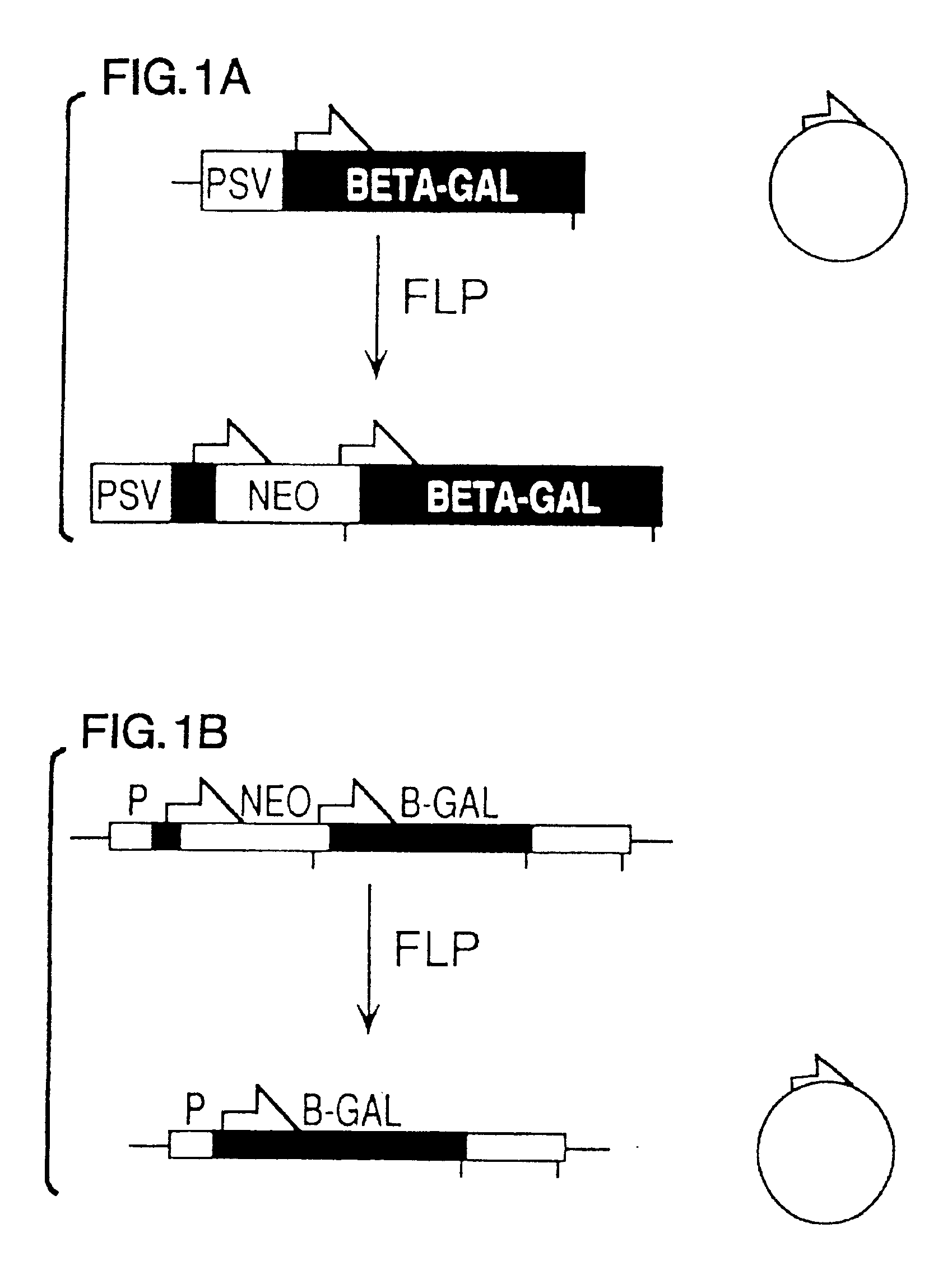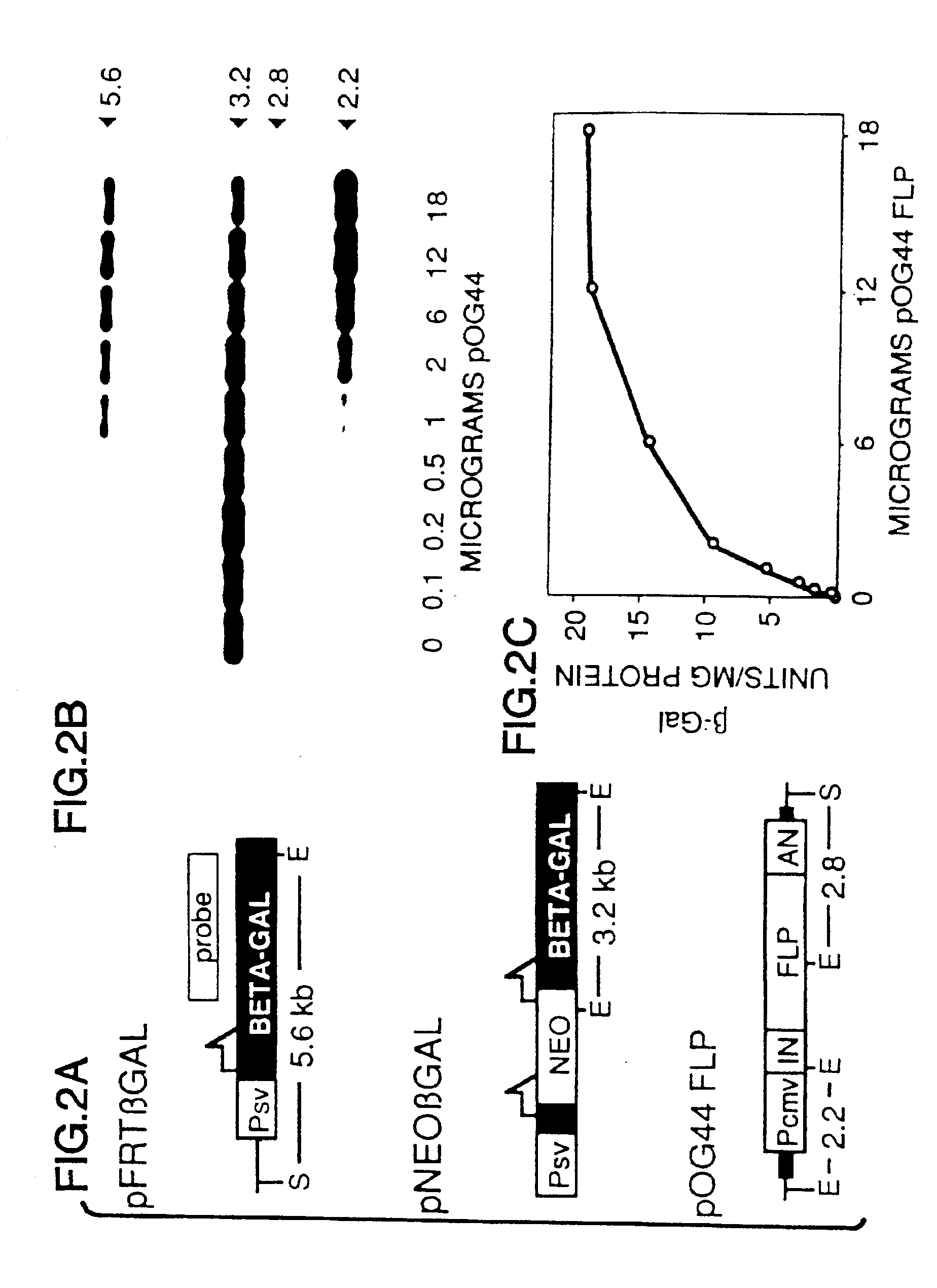FLP-mediated gene modification in mammalian cells, and compositions and cells useful therefor
a technology of flp and mammalian cells, applied in the field of site-specific recombination of dna in mammalian cells, can solve the problems of inability to control the number of copies, and inability to control the effect of such manipulations
- Summary
- Abstract
- Description
- Claims
- Application Information
AI Technical Summary
Benefits of technology
Problems solved by technology
Method used
Image
Examples
example 1
Co-transfection Assays
[0080]The co-transfection assay used to characterize FLP-mediated recombination of extrachromosomal DNA involved transfection of cells with an expression construct and a “reporter” plasmid that was a substrate for the recombinase. The activity of the expression construct could be assayed either by recovering the reporter plasmid and looking for molecular evidence of recombination at the DNA level, or by preparing cytoplasmic extracts and looking for evidence of recombination at the protein level (i.e., by measuring β-galactosidase activity generated by recombined reporter).
[0081]The pNEOβGAL reporter plasmid used for these assays was derived from pFRTβGAL (FIG. 2A). In the Figure, half-arrows indicate positions of FLP recombination target (FRT) sites; E and S designate EcoRI and ScaI restriction sites, respectively; Psv designates early promoter from SV40; BETA-GAL designates the β-galactosidase structural sequence; NEO designates neomycin expression cassette; ...
example 2
FLP-Mediated Removal of Intervening Sequences
[0093]If the invention method is to be widely applicable, for example for gene activation in transgenic mammals, the ability of FLP to faithfully promote precise recombination at FLP recombination target sites contained in the mammalian genome is required. Such ability is demonstrated in this example.
[0094]Cell lines that contain single integrated copies of pNEOβGAL (designated CVNEOβGAL / E) were produced by transfecting CV-1 cells with linearized plasmid by electroporation, then isolated by selecting G418-resistant (G418R) transfectants that stably expressed the neomycin cassette, and finally identifying single copy lines by Southern blot analyses (FIG. 3). As previously shown for other integrated constructs with similarly short direct repeats, the chromosomal FRTs did not spontaneously recombine (in the absence of FLP) to produce a β-galactosidase-positive (βGAL+) phenotype at detectable frequencies (Table 2).
[0095]Transient expression o...
example 3
FLP Mediated Recombination of FRT on an Extrachromosomal Molecule With a Chromosomally Integrated FRT
[0101]Reversal of the process described in the previous Example, i.e., the FLP-mediated recombination of an FRT site on a plasmid with a chromosomally integrated FRT site, can be used to target the integration of transfected plasmids to specific genomic sites. To determine the frequency at which this occurs, G418-sensitive, βGAL+ E25B2 cells were co-transfected with the pOG44 FLP expression vector and a plasmid, pOG45, that contained a neomycin resistance gene expression cassette and a single FRT. pOG45 consisted of the neomycin resistance cassette and 3′ FRT from pNEOβGAL cloned into pUC19.8×105 CVNEOβGAL cells were transfected by electroporation in 800 μl of saline containing 40 μg of pOG44 and 0.1 μg of either pOG45 or, for a negative control, pOG45A (which was derived from pOG45 by deleting a 200 bp fragment containing the FRT).
[0102]G418R subclones (designated B2N) from three tr...
PUM
| Property | Measurement | Unit |
|---|---|---|
| Mass | aaaaa | aaaaa |
| Mass | aaaaa | aaaaa |
| Mass | aaaaa | aaaaa |
Abstract
Description
Claims
Application Information
 Login to View More
Login to View More - R&D
- Intellectual Property
- Life Sciences
- Materials
- Tech Scout
- Unparalleled Data Quality
- Higher Quality Content
- 60% Fewer Hallucinations
Browse by: Latest US Patents, China's latest patents, Technical Efficacy Thesaurus, Application Domain, Technology Topic, Popular Technical Reports.
© 2025 PatSnap. All rights reserved.Legal|Privacy policy|Modern Slavery Act Transparency Statement|Sitemap|About US| Contact US: help@patsnap.com



